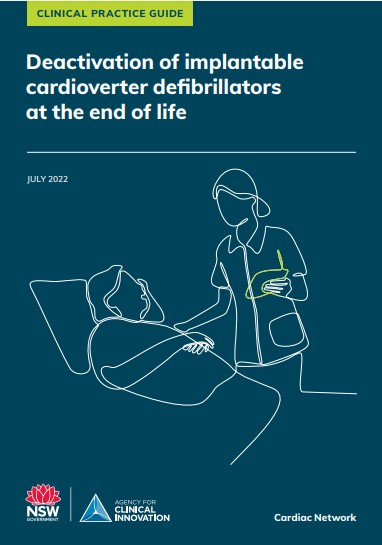Published: July 2022. Next review: 2027.
This clinical practice guide supports clinicians to:
- discuss deactivation of the implantable cardioverter defibrillator (ICD) with patients and their families
- manage the deactivation process
- support a peaceful death.
This guidance is relevant across acute care, primary care and residential aged care settings.
At a glance
- Discuss the deactivation process with the patient and their family (or the person responsible) and document informed consent. Provide ongoing support as required.
- Medical officer confirms the decision to deactivate the ICD and the device is identified.
- Medical officer documents which functions are to remain active and which functions are to be deactivated.
- A bar (or clinical ring) magnet should be taped directly over the device to temporarily deactivate the defibrillator function when the patient is dying. The magnet should be left in place until the patient is deceased.
- If necessary, contact the relevant device company, provide written details of deactivation requirements and make an appointment for a Medical Officer and the company representative to deactivate the ICD.
- ICD deactivated.
- Details of the deactivation must be recorded in the patient's medical notes or client records.
Background
ICDs are inserted to prevent sudden cardiac death from life-threatening arrhythmias. The device monitors the electrical rate and rhythm in the heart and, if certain arrhythmias are detected, a tachycardia therapy may be delivered to convert the heart into its usual rhythm.
ICD activation at the end of life is unnecessary and distressing for patients and their families.
Deactivation of the ICD can allow a peaceful death.
Update
This clinical practice guide was first published in 2014 as the NSW guidelines for deactivation of implantable cardioverter defibrillators at the end of life.
The updated guide was published in 2022. It incorporates the most current available evidence and expert opinion. It also considers issues that had not been covered in the first version of the guide.
